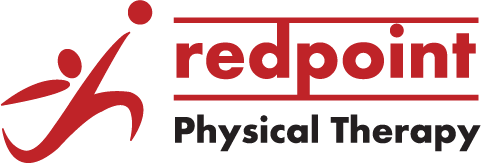#WeCanFixThat: The one with headaches and TMJ disorder.
At Redpoint, one of our mottos is, “We can fix that.” And we really mean it when we say it, which is frequently. But sometimes, we can’t be sure how successful a patient will be with physical therapy.
Such was the case with *Lisa. She presented to the clinic complaining of increasing headaches and frequent jaw locking episodes, which are things we treat often in our office. However, talking to her during her initial evaluation gave us concern that we might not be able to completely resolve her issues. It turns out, she was coming to us with a 25-year history of temporomandibular joint (TMJ) disorder, and underwent open joint surgery in college to remove part of the joint (this surgery is an absolute last resort for TMJ and has evolved since Lisa had it so many years ago). She had been to physical therapy many times for her jaw but had never regained normal movement.
We weren’t sure we could fix her jaw, but we knew we could help her with her headaches and we got right to work. We generally follow the same format with all cases: restore soft tissue and joint mobility as much as possible (this is when we work out muscle knots and try to get stiff joints moving more normally), then address movement patterns (with injuries, we tend to develop faulty movement patterns due to compensation), followed by strengthening to return to whatever activities you wish to do. On that first day, all of Lisa’s muscles in her neck, shoulders, and around her jaw were in spasm, so soft tissue management was a clear place to start.
Because of the prolonged dysfunction in her TMJ, she was unable to open her mouth without first sliding her jaw to the right, then deviating dramatically to the opposite side in an arc motion. It was painful, clicked loudly, and she was unable to open fully. She failed to mention her shoulder pain, but I guessed correctly that she was having more difficulty with overhead tasks (she presented with textbook upper crossed syndrome). In her daily life, she was struggling to eat anything more than soft foods and was unable to do regular daily activities without headache.
At the conclusion of her initial visit, I informed her that by treating her postural issues, I was confident we could improve her shoulder pain, knock down her headaches and neck pain. I was honest with her about her jaw, pointing out that the surgery altered the mechanics of the joint and she had moved poorly for so many years, so I wasn’t sure how much progress we would make there. I promised I would do my best to improve her quality of life.
Cheek blowing is a common relaxation technique for TMJ disorders.
The next several sessions focused heavily on restoring normal muscle balance through massage, muscle relaxation exercises, behavior modification (recognizing when she was clenching, for example), stretching her neck, shoulders, and jaw, and gradually improving shoulder strength to decrease the amount she had to compensate with tasks throughout her day.
“There are times now when I can open my jaw without it popping for the first time in a decade!”
By the 5th visit, Lisa exclaimed, "There are times now when I can open my jaw without it popping for the first time in a decade!" Upon further investigation, she was still limited with how far her jaw opened, but she was able to open without deviating to the side or clicking. We were also pleased to hear that her headaches were significantly better since starting physical therapy with us.
Some of my favorite jaw exercises out of my Therapeutic Exercise textbook by Hall and Brody. I find that frequently, I can move a person’s jaw normally and without pain, so these passive stretches help restore normal joint motion which almost always…
Over the next 10 visits, she was able to progress her shoulder strengthening to the point where she was able to perform regular daily activities without headaches. By her final visit, she reported her headaches had decreased in intensity from 9/10 to 4/10 at worst, and only occurring occasionally. She still had pain with chewing but was able to eat soft foods occasionally without pain and was consistently able to open her jaw with no clicking. In a total of 20 visits, she had improved far more than she or any of us had anticipated. It was one of the most satisfying cases in the history of Redpoint PT!
Lisa came to us with headaches and episodes of jaw locking, but left with better shoulder strength, normalized jaw and neck movement patterns, and a significant reduction in pain. This case is an excellent illustration of how everything in the human body is connected, and highlights the importance of your therapist looking beyond the joint or structure that is bothering you. It is also noteworthy that Lisa’s trust in our expertise and her commitment to all we were teaching her was a key component in this case’s success.
Remember, at Redpoint PT, we don’t treat body parts. We treat people. So, don’t be surprised when you come in with shoulder pain and we’re looking at your opposite hip. We promise to sing Dem Bones at some point during your care with us… because the head bone really is connected to the neck bone. :)



